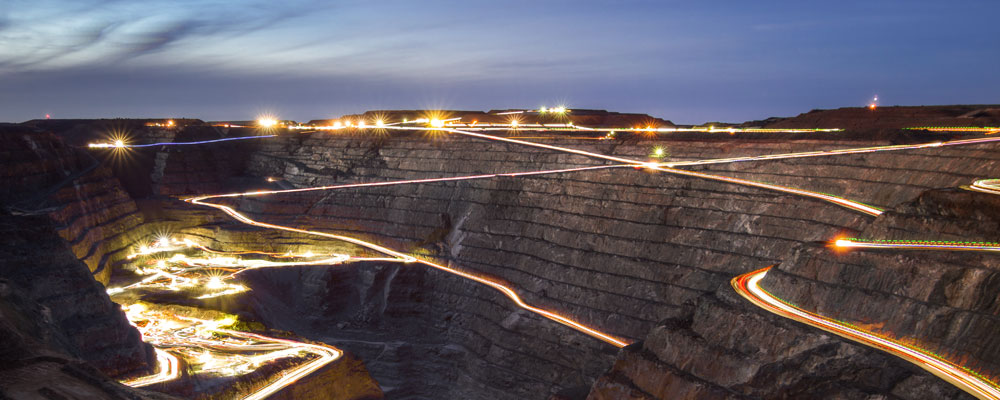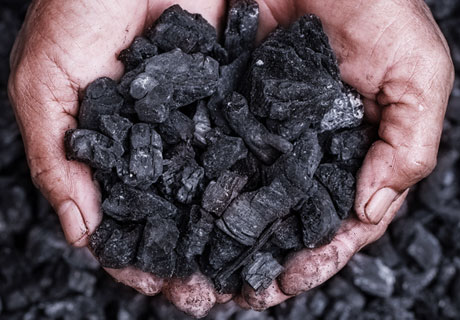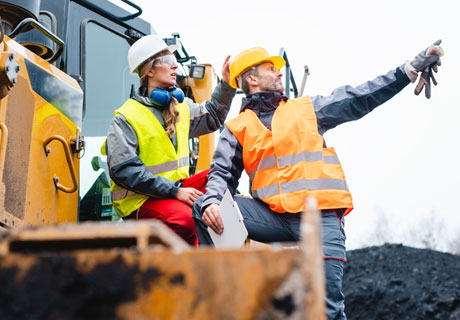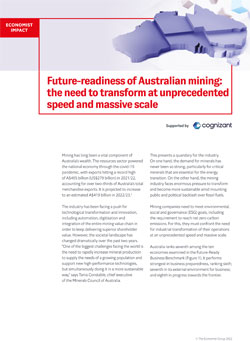
Mining has long been a vital component of Australia’s wealth. The resources sector powered the national economy through the covid-19 pandemic, with exports hitting a record high of A$405 billion (US$279 billion) in 2021/22, accounting for over two-thirds of Australia’s total merchandise exports. It is projected to increase to an estimated A$419 billion in 2022/23.1
The industry has been facing a push for technological transformation and innovation, including automation, digitisation and integration of the entire mining value chain in order to keep delivering superior shareholder value. However, the societal landscape has changed dramatically over the past two years. “One of the biggest challenges facing the world is the need to rapidly increase mineral production to supply the needs of a growing population and support new high-performance technologies, but simultaneously doing it in a more sustainable way,” says Tania Constable, chief executive of the Minerals Council of Australia.
This presents a quandary for the industry. On one hand, the demand for minerals has never been so strong, particularly for critical minerals that are essential for the energy transition. On the other hand, the mining industry faces enormous pressure to transform and become more sustainable amid mounting public and political backlash over fossil fuels.
Mining companies need to meet environmental, social and governance (ESG) goals, including the requirement to reach net zero carbon emissions. For this, they must confront the need for industrial transformation of their operations at an unprecedented speed and massive scale.
Australia ranks seventh among the ten economies examined in the Future-Ready Business Benchmark (Figure 1). It performs strongest in business preparedness, ranking sixth; seventh in its external environment for business; and eighth in progress towards the frontier.
Analysis of the indicators shows that Australia’s performance is driven by strong accountability in environmental initiatives but relatively poor leadership and culture, which hampers firms’ modernisation. Australian businesses have more to gain from developing technology strategies that are linked to clear business goals for strategic value. Looking ahead, these are significant challenges which need to be addressed through a mix of government policy, institutional initiatives and organisational leadership. As one of the largest industries in the economy—and the most scrutinised in setting the sustainability agenda—mining has a significant role to play in driving Australia’s future-readiness.
Sustainability—taking concrete action
Tania Constable, chief executive of the Minerals Council of Australia
The mining industry is seeing new economic impetus. The switch to renewables is driving enormous demand for critical minerals that are vital to a sustainable economy and heralds the start of what could be a decades-long2 mining boom.3 The price of copper, for example, one of the main components in electric vehicle (EV) batteries, surged by 51% in 2021, supported by rapid growth in the EV industry. It is expected to rise by nearly 7% in 2022, and 9% in 2023 (Figure 2).4
According to Ms Constable, “there is recognition that you cannot deliver a net zero emissions economy without the minerals and metals that go into new technologies.”
While the mining sector is benefitting financially from the energy transition, it is significantly underperforming on ESG. One of Australia’s biggest mining companies, Fortescue Metals Group, was awarded an ESG score of just 66 out of 100 by US credit rating agency S&P Global in January 2022, placing it one point below the 67-point average of more than 100 entities rated across 22 sectors globally.5
This does not mean that the sector is not addressing its ESG challenges, reckons Adrian Beer, CEO of METS Ignited. He explains that the long held misconception of mining as a major polluter fails to recognise how much the sector values ESG and its investments in addressing sustainability challenges. This investment is often poorly communicated largely due to the industry’s fear of regulatory and media backlash, argues Mr Beer. He says there are mining firms that have used robotics and automation technologies, data analysis, machine learning and artificial intelligence (AI) for years to ensure efficient operations for maximum extraction, in the most sustainable, safe, and cost-effective way possible.

The mining sector’s communication problem which Mr Beer describes could be overcome by better informing the public of the ESG improvements being made, but longer-term there is no hiding the fact that the extraction of raw materials is an inherently unsustainable business.
Ms Constable highlights a different issue facing the industry—skills shortages. “The industry’s success will be built on investment in advanced technologies and attracting the most talented people in the country. But now the sector is competing with other industries in a tight labour market for highly skilled workers that can deliver the next wave of innovation,” she says. “These technologies are needed to reduce energy consumption, enhance water efficiency, improve safety and lift operational performance if Australia is to remain a world leader in sustainable mining.”
Ms Constable explains that the “acute and chronic” staff shortages require a comprehensive workforce plan to improve education pathways to high-employment growth industries. “Governments, industry, education and training providers must work together on this,” she adds.
New minerals bring new opportunities

The shifting dynamics of energy generation, transport, storage and distribution are creating demand for minerals that do not have the same asset life cycles as traditional commodities. Mines holding critical minerals and rare earths including copper, cobalt, lithium, nickel, lead and zinc—crucial to the production of batteries for energy storage and transmission, permanent magnets for wind turbines, and regenerative materials for EVs—have life cycles of only ten to 15 years. This is relatively shorter than the average lifespan of a thermal coal mine which is about 25 years.
“Critical minerals tend towards smaller, satellite deposits, meaning you can’t invest billions in infrastructure with long payback periods,” says Mr Beer. “It also means it can be much more difficult for a single company to invest in all the infrastructure for downstream processing. We’re starting to see downstream collaboration between companies with rights to certain ore bodies, to share infrastructure in terms of processing and distribution.”
Similarly, extraction methods are becoming modular, smaller, more technology-enabled and flexible: “…we tend to see aggregated extraction capabilities of mine owners and downstream processing assets now being purchased in partnerships,” says Mr Beer.
Progress through collaboration

Access to the technology that makes these assets viable is changing. Traditionally, mining companies have tended to do the heavy lifting themselves in terms of innovation, technology and processes that will maximise sustainable operations in long-run traditional assets that facilitate financial returns. As a result, most of the new technologies developed in the supply chain are not commercially available for other mining companies that want access to these innovations from vendors.
“We talk about innovation being stranded in the supply chain,” explains Mr Beer. “What we [have seen] is a lot of collaborative industry investment with government co-funding research, but the industry participant in that research is often the mine operator, not a commercialisation partner.” But now “we’re starting to see a shift towards co-investment with technology companies that develop products and services to make a range of mining assets viable, as opposed to public research solving the problem for one particular operating asset.” says Mr Beer.
Adrian Beer, chief executive of METS Ignited Australia
The sector is also experiencing disruption from cash-rich, technologically advanced non-mining companies set up to support the green revolution. For example, Australian firm, Auroch Minerals recently acquired an 80% interest in the United States Nevada Lithium project6 which supports Tesla’s Gigafactory, along with a range of new junior mining companies which signed early-stage agreements with the EV manufacturer in 2015.7
Mr Beer believes that the appearance of these new players should be considered an opportunity, not a threat. Proximity to the extraction of raw materials encourages new innovations and creates more secure supply chains from both a national and a company perspective. This generates greater local demand across the value chain. “Increasing downstream production of raw materials in our local market would attract manufacturers back to the country,” he says.
Between 1995 and 2020, Australia’s ranking fell from 55 to 91 in Harvard’s Economic Complexity Index8 of 133 countries, which measures the value-add of local economies (Figure 3). Mr Beer highlights that Australia’s “rapid slide down” is due in some part to a large portion of the GDP being driven by the exports of raw materials, which has resulted in raw material producers being left to “sort out their own technology needs”. Australia has not capitalised on this unique opportunity to commercialise the research and technology developed locally. The way to improve the sophistication of the local economy is to either increase the amount of value-add to the raw materials, or export more advanced products, services and manufactured goods.
“The portion of the market that makes high-value-add goods is made up of a very large number of very small companies, while the Australian economy is dominated by a very small number of very large companies that export raw materials,” Mr Beer says. “If we were to increase the exports of our small innovative companies by as little as 10%, this would result in an AU$36 billion contribution to the economy…Yet, we keep shipping…instead of thinking ‘wait a minute, why can’t we do that here?’”.
Adrian Beer, chief executive of METS Ignited Australia
Australia’s big industry players have invested in four-to-five decades of research and innovation to overcome their individual challenges. Yet these efforts have been in isolation and the transition to a low-emissions future requires an industry-wide effort.
The nation also has the potential to dramatically grow the services and manufacturing part of its mining industry. It has a strong research capability, developed commodity supply chains and access to capital. Industry cannot go it alone, however. The role of the government is to focus investment on translation partners and technology vendors which are capable of commercialising that research outcome, increasing both market access for innovation and the size of the investment pool.
Key takeaways
About the research
This industry analysis forms part of Advance Australia prepare: how to make Australian businesses future-ready, the country-focused segment of a global programme, the Future-Ready Business Benchmark, developed by Economist Impact and supported by Cognizant. The future-readiness benchmark—based on primary survey data from 2,000 respondents, interviews with business leaders, and secondary data—provides a snapshot of future-readiness across ten countries and eight sectors9 while examining the broader environment influencing decision-making. It encompasses over 130 indicators grouped into three pillars that measure future-readiness: the external environment, business preparedness and progress towards the frontier. Industry analysis is limited to the latter two pillars, as the pillar on external environment measures future-readiness of the country as a whole. The resulting reports and analysis are available via the programme hub.
We would like to thank Adrian Beer, chief executive of METS Ignited Australia, and Tania Constable PSM, chief executive of the Minerals Council of Australia, for their contribution to this article.
- Resources and Energy Quarterly, Department of Industry, Science, Energy and Resources, June 2022,
https://publications.industry.gov.au/publications/resourcesandenergyquarterlyjune2022/index.html - BlackRock says boom could last decades as copper price tops $10,000, Mining.com, January 12th 2022, https://www.mining.com/copper-price-surges-toward-10000-as-bulls-bet-on-china-growth/
- Grigg, A. et al, The rush to renewable energy means a new mining boom. But first, Australia needs to make some tough choices, Four Corners, ABC, May 9th 2022, https://www.abc.net.au/news/2022-05-09/renewable-energy-may-require-australian-mining-boom/101034914
- EIU Commodity Price Index: Industrial raw materials, World, Economist Intelligence Unit, July 1st 2022.
- Cummings, J, The world’s fourth largest iron ore producer – FMG – just got slapped with “below average” ESG score, Stockhead, January 28th 2022, https://stockhead.com.au/resources/the-worlds-fourth-largest-iron-ore-producer-fmg-just-got-slapped-with-below-average-esg-score/
- Auroch makes stunning entrance into emerging US lithium market with Nevada project purchase, Special Report, Stockhead, April 20th 2022, https://stockhead.com.au/resources/auroch-makes-stunning-entrance-into-emerging-us-lithium-market-with-nevada-project-purchase/
- We need to talk about the future of mining, PWC’s Future In Sight series, PWC, 2017, https://www.pwc.com.au/eum/we-need-to-talk-about-future-of-mining-2017.pdf
- A lower rank corresponds to lower complexity and diversification in the economy. Hausmann R et al., The Atlas of Economic Complexity, Country & Product Complexity Rankings, Harvard Growth Lab, Center for International Development, Harvard University, 2019, https://atlas.cid.harvard.edu/rankings
- The mining industry is not covered in this assessment.






















